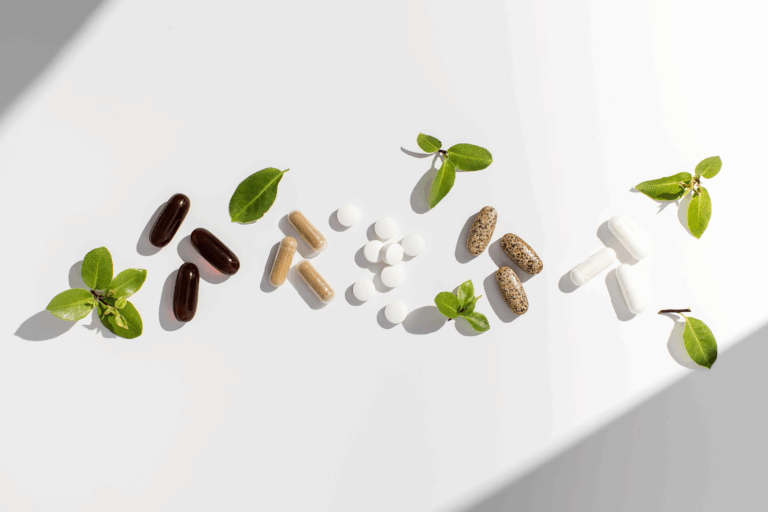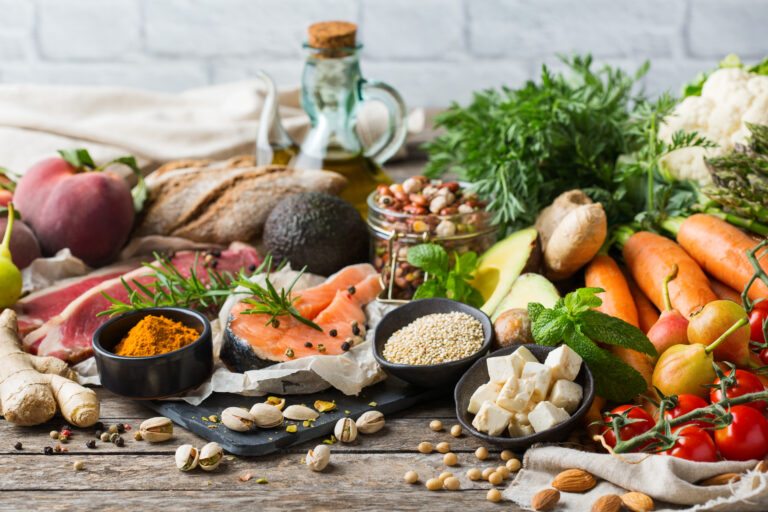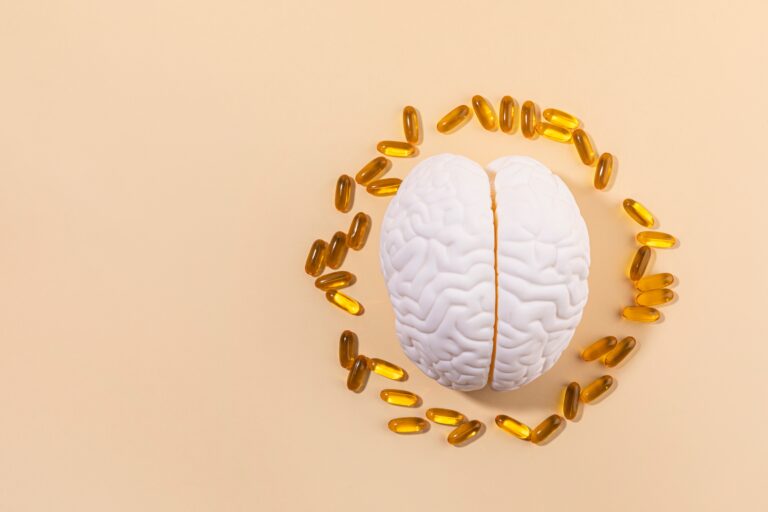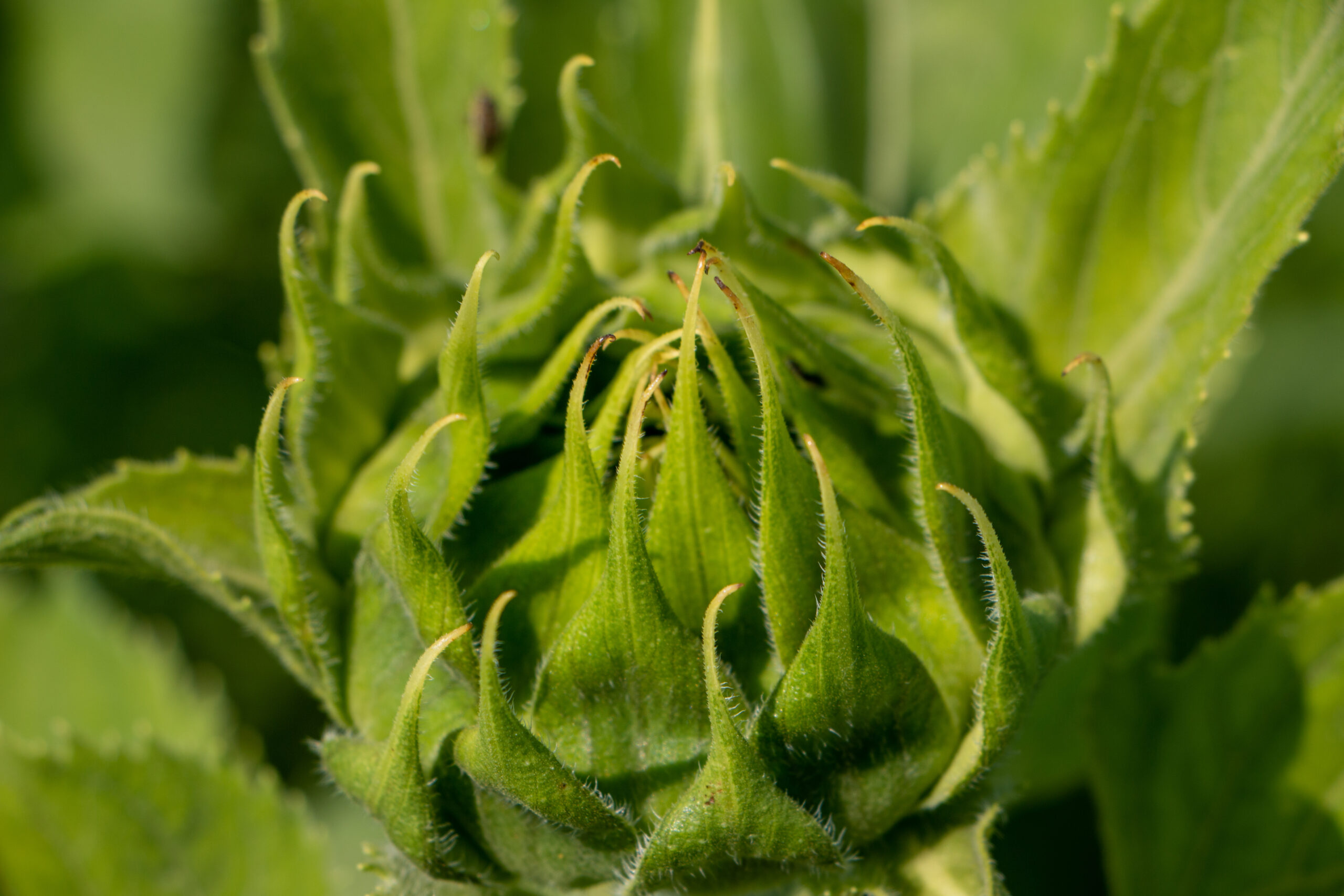Oxidative Stress in Cardiovascular Conditions
Summary
Oxidative stress can impact cardiovascular health through several mechanisms. Many vitamins, minerals, and phytonutrients function as natural antioxidants, helping to alleviate oxidative stress and improve cardiovascular health.
As a part of normal metabolism, cells generate reactive oxygen species (ROS) and reactive nitrogen species (RNS) that play important roles in cell signaling. However, elevated ROS and RNS can lead to oxidative stress, which occurs when there is an imbalance between pro-oxidant species and antioxidant compounds. Excessive levels of ROS can have many detrimental effects on the cell, tissue, and body. Their harmful effects are particularly apparent when looking at the pathogenesis of cardiovascular disease (CVD). Given the high prevalence of CVD in the U.S. and globally – 32 percent of deaths in the U.S. and worldwide were attributed to CVD in 2020 – there has been increased interest in better understanding the role that oxidative stress plays in CVD development as well as the role of antioxidant nutrients in reducing oxidative stress and supporting cardiovascular health.1
What is Oxidative Stress?
Oxidative stress occurs when a transient or permanent perturbation in the oxidative balance state produces physiological consequences within the cell.2 Oxidative balance is a delicate cellular state, with ROS levels fluctuating in a controlled manner by enzymatic and non-enzymatic antioxidant systems.2 Elements that contribute to oxidative balance include:
| Reactive Oxygen Species | Pro-oxidant Enzymes | Antioxidants | ||||
| Free radicals | Superoxide | NADPH Oxidases | Enzymes | Superoxide Dismutase | ||
| Hydroxyl radicals | Xanthine Oxidase | Catalase | ||||
| Peroxyl radicals | Nitric Oxide Synthase | Glutathione Peroxidase | ||||
| Non-radicals | Hydrogen peroxide | Cyclooxygenases | Compounds | Vitamin E | ||
| Hypochlorous acid | Cytochrome P450 enzymes | Vitamin A | ||||
| Ozone | Lipoxygenases | Vitamin C | ||||
ROS production
In healthy cells, ROS are produced as a byproduct of biochemical pathways and as a direct result of various enzyme systems. Mitochondria are the main producers of intracellular oxidants due to their role in energy production.3 During normal energy metabolism, electrons move through the electron transport chain, releasing energy at each step. But in dysregulated states and pathological conditions, electrons can leak out of the system early and react with oxygen to form superoxide.4 Maintaining oxidative balance in the mitochondria is especially important because they are involved in maintaining homeostasis in the heart, generating energy, and controlling calcium signaling.3
NADPH oxidases (NOX) are a family of enzymes that consists of several different isoforms, four of which are highly expressed in the cardiovascular system.5 NOX enzymes specifically produce ROS as part of an oxidative burst to promote immune system defenses against invading pathogens, but they are also a major source of vascular oxidative species.6 Other enzymes that produce ROS in the cell include nitric oxide synthase (NOS), cyclooxygenases (COX), and cytochrome P450 enzymes (CYP).6 Additionally, external triggers including radiation, smoking, alcohol, and environmental agents can influence pro-oxidant species and inhibit antioxidant compounds.2,4
ROS metabolism
Within cells, ROS are important signaling molecules that function as part of signal transduction pathways, help defend against invading pathogens, regulate gene expression, influence epigenetic modifications, and modulate cellular death pathways.3,4,7 However, ROS are highly active and unstable and can interact with proteins, lipids, and DNA in the cell.4,6 Lipids are particularly important targets because they are critical components of cellular membranes and important signaling molecules.4 When exposed to excess ROS, they undergo oxidation, resulting in lipid peroxyl radicals that contribute to the pathogenesis of many diseases.4
Role of Oxidative Stress in Cardiovascular Conditions
At a cellular level, oxidative stress is a major contributor to CVD, along with inflammation.6 Excess ROS perturb cellular pathways, impacting cellular health and signaling, which eventually accumulates in tissue-specific damage including endothelial dysfunction, improper enzyme activation, and dysregulated signaling. These changes, in turn, result in further production of ROS, exacerbating oxidative stress and CVD progression. Oxidative stress affects many components of the cardiovascular system, and several cardiovascular diseases are associated with excess production of ROS.8-11
Hypertension
Oxidative stress can significantly impair endothelial function, which contributes to the development of hypertension and poor cardiovascular health. Some reactive oxygen species can degrade nitric oxide (NO), resulting in vasoconstriction and vascular oxidative stress.6 Additionally, under some pathophysiological conditions, endothelial nitric oxide synthase (eNOS) can become “uncoupled” which results in excess production of pro-oxidant species.2,6 Excess oxidative species in blood vessels lead to increased lipid peroxidation, DNA damage, platelet activation, and inflammatory molecules.2
NOX enzymes are uniquely expressed in specific cells and regions of the cardiovascular system and influence the development of hypertension and vascular system health.6 Upon stimulation, NOX enzymes produce ROS in endothelial cells, decreasing NO levels and inducing vasoconstriction.6 Elevated ROS can also cause a rise in intracellular calcium ions, which further contribute to vasoconstriction.6 In patients with hypertension, both systolic and diastolic blood pressure positively correlated with oxidative stress markers and negatively correlated with plasma antioxidant capacity.12
Atherosclerosis
Oxidized low-density lipoproteins (oxLDL) are a major contributor to the formation of foam cells and atherosclerotic plaques.2,6 ROS oxidize LDL to form oxLDL, which are not cleared from the sub-endothelial space and begin to accumulate as part of plaque formation.13 Oxidized LDL also induce the production of adhesion molecules which recruit immune cells to stimulate the immune system response.4,13 Next, the monocytes activated by oxLDL mature into macrophages which can internalize LDL and release pro-inflammatory cytokines and ROS, exacerbating the cycle and enhancing plaque formation.4,13 Together, these events result in significantly increased foam cell formation and apoptosis as plaque formation continues.
NOX2, a specific isoform of the NOX family, may be important in atherosclerosis development and progression.6 NOX2 expression was upregulated in aortic endothelial cells and in macrophages in a mouse model of CVD even before there was appearance of atherosclerotic lesions in blood vessels.14 Additionally, these changes coincided with increased ROS production in the aorta.14 Mice that were fed a high-fat diet along with an inhibitor of NOX2 demonstrated significant regression of atherosclerotic plaque, displaying the ability of NOX2 to mediate ROS-induced atherosclerosis.15
Heart failure
The presence of excessive ROS is a characteristic of heart failure at every stage.4 Within the heart, ROS influence myocardial cell growth and cellular matrix remodeling, which ultimately results in dysfunction among cells in the heart.6 Mechanistically, ROS stimulate NF-κB, a regulator of cellular proliferation, inflammation, and redox status, resulting in hypertrophy and maladaptive remodeling of the heart which can lead to fibrosis.4,6 ROS can also influence the extracellular matrix, resulting in cardiac fibroblast proliferation, changes in myocardial structure, and eventual fibrosis.4,6 Oxidative stress markers are increasingly used as biomarkers in heart failure patients.16,17
Atrial fibrillation
Calcium ions signal cardiac contraction and regulate many other cellular processes within the heart.3 Oxidative stress can cause a leak of intracellular calcium ions, leading to abnormal signaling and atrial fibrillation.6 Atrial fibrillation can also worsen oxidative stress by upregulating NOX expression, creating a vicious cycle.6 Additionally, oxidative stress can damage mitochondrial DNA, causing mutations that may be involved in the development of atrial fibrillation.18
Nutritional Support for Oxidative Stress
The body contains natural antioxidant systems to neutralize ROS and prevent the detrimental effects of oxidative stress. There are antioxidant enzymes, as well as antioxidant compounds that can directly neutralize free radicals.6 Antioxidant systems can also facilitate vasorelaxation, inhibit inflammatory cell adhesion in blood vessels, and influence vascular cell function to help protect against atherogenesis.2 Several micronutrients and bioactive compounds function as antioxidants in the body.
Vitamins
Vitamins A, C, and E are important contributors to antioxidant defense systems. In the vitamin A family, several metabolites are potent antioxidants including the carotenoids beta-carotene and astaxanthin.4 These unsaturated compounds can react directly with oxidative species to neutralize them or indirectly by upregulating antioxidant enzymes in the cell.4,19 In a human clinical trial, astaxanthin reduced the biomarker for lipid peroxidation while increasing antioxidant enzyme levels.20 Vitamin A can be found in orange-colored foods including sweet potatoes, pumpkins, carrots, and cantaloupes.
Vitamin C is part of a fundamental antioxidant pathway that reduces radical or oxidized forms of other antioxidants, enabling them to regain their antioxidant potential.19 Vitamin C neutralizes both exogenous and endogenous ROS and is then recycled back into its reduced form via the work of another antioxidant, glutathione.4 Vitamin C also supports cardiovascular health by scavenging radical species in endothelial cells, preventing endothelial dysfunction, promoting vasodilation and blood flow, and inhibiting apoptosis.21 Citrus fruits are an excellent source of vitamin C.
Vitamin E, found in nuts and oils, is a family of tocopherols and tocotrienols. These compounds can inhibit the assembly of NOX enzymes, helping prevent ROS formation, and protect fatty acids in cell membranes.4,19 Alpha-tocopherol, the strongest antioxidant form of vitamin E, can reduce ROS and improve cardiovascular measures.22
Minerals
Manganese, copper, and zinc are important minerals that promote oxidative balance as components of the antioxidant enzyme superoxide dismutase (SOD). Manganese SOD (MnSOD) is located in the mitochondrial matrix while copper-zinc SOD (Cu/ZnSOD) resides in the cytoplasm and nucleus.4 Together, they convert ROS into less harmful compounds and protect cells from oxidative stress.4
In addition to its structural role in Cu/ZnSOD, zinc is also a cofactor for enzymes involved in protecting cells against oxidative damage, stabilizing membranes, and inhibiting NOX enzymes.23 Zinc is so critical to oxidative balance that deficiency alone causes oxidative damage and enhances the inflammatory response in endothelial cells while zinc supplementation protects blood vessels against damage via regulation of Nrf2, a regulator of oxidative balance.23 Food sources of zinc include oysters, fortified cereals, and pumpkin seeds.
Selenium, found in seafood, Brazil nuts, and meat, is a mineral that can be incorporated into proteins to form selenoproteins. Selenoproteins are found in several antioxidant enzymes including glutathione peroxidase and thioredoxin reductase, both of which are important for regulating oxidative stress in cardiovascular tissues.24 Selenoprotein P may also benefit cardiovascular health by protecting LDL from oxidation by ROS.24
Bioactive compounds
In addition to these vitamins and minerals, many phytonutrients and bioactive compounds function as antioxidants. Flavonoids, a class of phytonutrients, support oxidative balance by:6
- Directly scavenging ROS
- Activating antioxidant enzymes
- Chelating metals
- Reducing radicals generated during vitamin E function
- Inhibiting oxidative enzymes
- Improving other antioxidant properties
A subclass of flavonoids, flavanols, decrease oxidative stress markers and improve cardiac function in patients with CVD, demonstrating the ability of food to improve cardiovascular health at every level.4 Flavonoids include many unique bioactive compounds, and as such, consuming a wide variety of plants can help obtain diverse flavonoids and help the body stay in oxidative balance through multiple mechanisms.6
The essential omega-3 fatty acids eicosapentaenoic acid (EPA) and docosahexaenoic acid (DHA) are regularly touted for their cardio-protective and anti-inflammatory capabilities, however they can also support oxidative balance. In an in vitro study, EPA and DHA reduced the most severe type of ROS-induced DNA damage in endothelial cells and decreased intracellular ROS by upregulating the Nrf2-mediated antioxidant response.25 These results suggest that EPA and DHA may protect cardiovascular healthy by reducing oxidative stress.25
Whole foods and herbs
The Mediterranean diet is often recommended because of its antioxidant, anti-inflammatory, and cardio-protective effects. Extra virgin olive oil, a staple of the Mediterranean Diet is rich in antioxidant polyphenols and can lower levels of markers of oxidative stress and endothelial dysfunction.6 Similarly, nuts and green tea provide antioxidants that help combat oxidative stress-induced CVD pathways.6 Antioxidants found in nuts may be able to inhibit LDL oxidation while catechins from green tea increase the activity of antioxidant enzymes, scavenge free radicals, reduce lipid peroxidation, and modulate vascular smooth muscle cells to reduce the risk of atherosclerosis.6,26
Medicinal herbs can help combat underlying oxidative stress and protect the cardiovascular system. Hawthorn (Crataegus oxyacantha) fruit displays strong antioxidant and ROS-scavenging actions due to the presence of many phytonutrients and bioactive compounds.27 It was first documented as a treatment for cardiovascular diseases in Europe in the late 1800s but is still in use today to improve cardiovascular health by reducing inflammation, hypertension, and thrombosis.27 Chinese Hawthorn (Crataegus pinnatifida) also displays strong antioxidant properties, scavenging free radicals, and interacting with antioxidant enzymes to enhance their effects.28 Hawthorn fruit extracts can also increase NO and activity of NOS, helping to alleviate oxidative stress.28
Supplementation versus dietary intake
While epidemiological studies have documented the overwhelming benefits of consuming whole foods and herbs with antioxidant properties, clinical studies with high-dose supplements have not displayed consistently positive results.29 Whole food antioxidants benefit the body and cardiovascular system, especially when they are consumed with other nutrients, phytonutrients, and antioxidants. They can also avoid the potentially negative effects of synthetic antioxidant supplements, which can actually have a pro-oxidant effect when consumed at high levels, an effect known as the antioxidant paradox.29
Oxidative balance is a complex state, influenced by a variety of pro-oxidant and antioxidant compounds. When this balance tips towards pro-oxidative systems, oxidative stress occurs and contributes to cardiovascular disease development and progression. The excess reactive oxygen species seen in oxidative stress can harm nearly every component of the cardiovascular system, including the heart and blood vessels. Fortunately, nutrients found in foods, especially those that comprise the Mediterranean Diet, provide antioxidant support to help reduce oxidative stress and activate antioxidant pathways to support cardiovascular health.
- Coronado, F., Melvin, S.C., Bell, R.A., Zhao, G. (2022). Global Responses to Prevent, Manage, and Control Cardiovascular Diseases. Prev Chronic Dis, 19:220347.
- Pignatelli, P., Menichelli, D., Pastori, D., Violi, F. (2018). Oxidative stress and cardiovascular disease: new insights. Kardiol Pol, 76(4):713.
- Sack, M.N., Fyhrquist, F.Y., Saijonmaa, O.J., Fuster, V., Kovacic, J.C. (2017). Basic Biology of Oxidative Stress and the Cardiovascular System. J Am Coll Cardiol, 70:196.
- Wang, W., Kang, P.M. (2020). Oxidative Stress and Antioxidant Treatments in Cardiovascular Diseases. Antioxidants, 9:1292.
- Bedard, K., Krause, K.-H. (2007). The NOX family of ROS-generating NADPH oxidases: Physiology and pathophysiology. Physiol Rev, 87:245.
- Senoner, T., Dichtl, W. (2019). Oxidative Stress in Cardiovascular Diseases: Still a Therapeutic Target? Nutrients, 11:2090.
- Finkel, T., (2011). Signal transduction by reactive oxygen species. J Cell Biol, 194:7.
- Tsutsui, H., Kinugawa, S., Matsushima, S. (2011). Oxidative stress and heart failure. Am J Physiol Circ Physiol, 301:H2181.
- Tahhan, A.S., Sandesara, P.B., Hayek, S.S., Alkhoder, A., Chivukula, K., Hammadah, M., Mohamed-Kelli, H., O’Neal, W.T., Topel, M., Ghasemzadeh, N., Ko, Y-.A., Aida, H., Gafeer, M., Sperling, L., Vaccarino, V., Liang, Y., Jones, D.P., Quyyumi, A.A. (2017). Association between oxidative stress and atrial fibrillation. Heart Rhythm, 14(12):1849.
- Baradaran, A., Nasri, H., Rafieian-Kopaei, M. (2014). Oxidative stress and hypertension: Possibility of hypertension therapy with antioxidants. J Res Med Sci, 19:358.
- Katoor, A.J., Pothineni, N.V.K., Palagiri, D., Mehta, J.L. (2017). Oxidative Stress in Atherosclerosis. Curr Atheroscler Rep, 19:42.
- Rodrigo, R., Prat, H., Passalacqua, W., Araya, J., Guichard, C., Bächler, J.P. (2007). Relationship between oxidative stress and essential hypertension. Hypertens Res, 30(12):1159.
- Violi, F., Loffredo, L., Carnevale, R., Pignatelli, P., Pastori, D. (2017). Atherothrombosis and Oxidative Stress: Mechanisms and Management in Elderly. Antioxid Redox Signal, 27(14):1083.
- Judkins, C.P., Diep, H., Broughton, B.R., Mast, A.E., Hooker, E.U., Miller, A.A., Selemidis, S., Dusting, G.J., Sobey, C.G., Drummond, G.R. (2010). Direct evidence of a role for Nox2 in superoxide production, reduced nitric oxide bioavailability, and early atherosclerotic plaque formation in ApoE-/- Am J Physiol Circ Physiol, 298:H24.
- Quesada, I.M., Lucero, A., Amaya, C., Meijles, D.N., Cifuentes, M.E., Pagano, P.J., Castro, C. (2015). Selective inactivation of NADPH oxidase 2 causes regression of vascularization and the size and stability of atherosclerotic plaques. Atherosclerosis, 242(2):469.
- Valavanidis, A., Vlachogianni, T., Fiotakis, C. (2009). 8-hydroxy-2’-deoxyguanosine (8-OHdG):A Critical Biomarker of Oxidative Stress and Carcinogenesis. J Environ Sci Health Part C, 27:120.
- Suzuki, S., Takeishi, Y. (2016). Oxidative Stress as a Prognostic Marker in Heart Failure. J Card Fail, 22:S158.
- Lin, P.-H., Lee, S.-H., Su, C.-P., Wei, Y.-H. (2003). Oxidative damage to mitochondrial DNA in atrial muscle of patients with atrial fibrillation. Free Radic Biol Med, 35:1310.
- Barteková, M., Adameová, A., Görbe, A., Ferenczyová, K., Pecháňová, O., Lazou, A., Dhalla, N.S., Ferdinandy, P., Giricz, Z. (2021). Natural and synthetic antioxidants targeting cardiac oxidative stress and redox signalling in cardiometabolic diseases. Free Radic Biol Med, 169:446.
- Visioli, F., Artaria, C. (2017). Astaxanthin in cardiovascular health and disease: Mechanisms of action, therapeutic merits, and knowledge gaps. Food Funct, 8:39.
- May, J.M., Harrison, F.E. (2013). Role of vitamin C in the function of the vascular endothelium. Antioxid Redox Signal, 19:2068.
- Wallert, M., Ziegler, M., Wang, X., Maluenda, A., Xu, X., Yap, M.L., Witt, R., Giles, C., Kluge, S., Hortmann, M., Zhang, J., Meikle, P., Lorkowski, S., Peter, K. (2019). α-Tocopherol preserves cardiac function by reducing oxidative stress and inflammation in ischemia/reperfusion injury. Redox Biol, 26:101292.
- Marreiro, D.D.N., Cruz, K.J.C., Morais, J.B.S., Beserra, J.B., Severo, J.S., De Oliveira, A.R.S. (2017). Zinc and Oxidative Stress: Current Mechanisms. Antioxidants, 6(2):24.
- Tinggi, U. (2008). Selenium: its role as antioxidant in human health. Environ Health Prev Med, 13(2):102.
- Sakai, C., Ishida, M., Ohba, H., Yamashita, H., Uchida, H., Yoshizumi, M., Ishida, T. (2017). Fish oil omega-3 polyunsaturated fatty acids attenuate oxidative stress-induced DNA damage in vascular endothelial cells. PLoS ONE, 12:e0187934.
- Chen, X.Q., Hu, T., Han, Y., Huang, W., Yuan, H.B., Zhang, Y.T., Du, Y., Jiang, Y.W. (2016). Preventive effects of catechins on cardiovascular disease. Molecules, 21:1759.
- Nabavi, S.F., Habtemariam, S., Ahmed, T., Sureda, A., Daglia, M., Sobarzo-Sánchez, E., Nabavi, S.M. (2015). Polyphenolic Composition of Crataegus monogyna : From Chemistry to Medical Applications. Nutrients, 7:7708.
- Wu, M., Liu, L., Xing, Y., Yang, S., Li, H., Cao, Y. (2020). Roles and Mechanisms of Hawthorn and Its Extracts on Atherosclerosis: A Review. Front Pharmacol, 11:118
- Biswas, S.K. (2016). Does the Interdependence between Oxidative Stress and Inflammation Explain the Antioxidant Paradox? Oxid Med Cell Longev, 2016:5698931.






